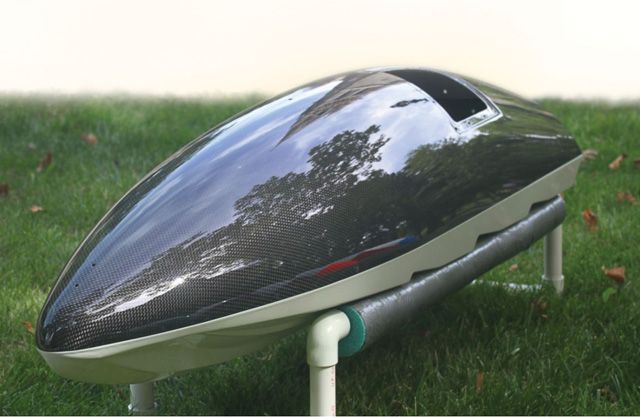Ultimately, researchers expect their discoveries to have practical applications, and Joachim Grenestedt, professor of mechanical engineering and mechanics and director of Lehigh’s Composites Lab, is adept at bringing ideas to physical fruition.
His projects have included a custom-built land-speed racer that he piloted on Utah’s Bonneville Salt Flats and an unmanned aircraft designed for perpetual flight. They’ve also included a 29-foot, two-seat speedboat made of stainless steel and composite materials built to study bottom slamming—the forceful, repetitive belly flopping of a boat as it moves at high speeds in waves.
Now in a complementary project, Grenestedt’s lab has built 10 small, unmanned, all-weather watercraft that can operate autonomously. Called Lehigh Ocean Research Craft Autonomous(LORCA), they were designed to measure ocean waves responsible for high slamming loads on fast-moving craft. “LORCA boats work like wave buoys, but because they move they can be used to get better measurements of wave propagation directions,” Grenestedt says.
Constructed of carbon-fiber composite and measuring about four feet in length, LORCAs are small and light enough for a single person to carry and launch virtually anywhere. “The rounded deck makes them self-righting,” Grenestedt says. “We can launch them upside down and they immediately turn right-side up.” Once on open water, a brushless, in-runner electric motor driving a submerged propeller on a straight shaft can propel the boats to maximum speeds of more than 50 mph.
Hardware development and manufacturing was funded in part by the Office of Naval Research, while a Lehigh Collaborative Research Opportunity (CORE) grant helped fund autopilot software and systems developed by John Spletzer, associate professor of computer science and engineering, and his students.
LORCAs are capable of using waypoint navigation in which Google map data downloaded to boats can be correlated with specific times that boats can be instructed to arrive at given points along a route. “Once we provide that information, we can let them go without any more human input,” Grenestedt says.
So far, LORCAs aren’t equipped to sense their environment or avoid obstacles with any form of automated intelligence—but the kind of research Lehigh’s Nader Motee and Subhrajit Bhattacharya are doing in systems control and motion planning could help foster such advances.
Grenestedt speculates that small, unmanned watercraft could have wide applications beyond wave research. Possibilities include dropping them from aircraft in search-and-rescue operations and using them for law enforcement or military purposes such scouting rivers, conducting anti-piracy operations or monitoring international water borders. “I think only imagination will limit what unmanned boats can do,” Grenestedt says.


